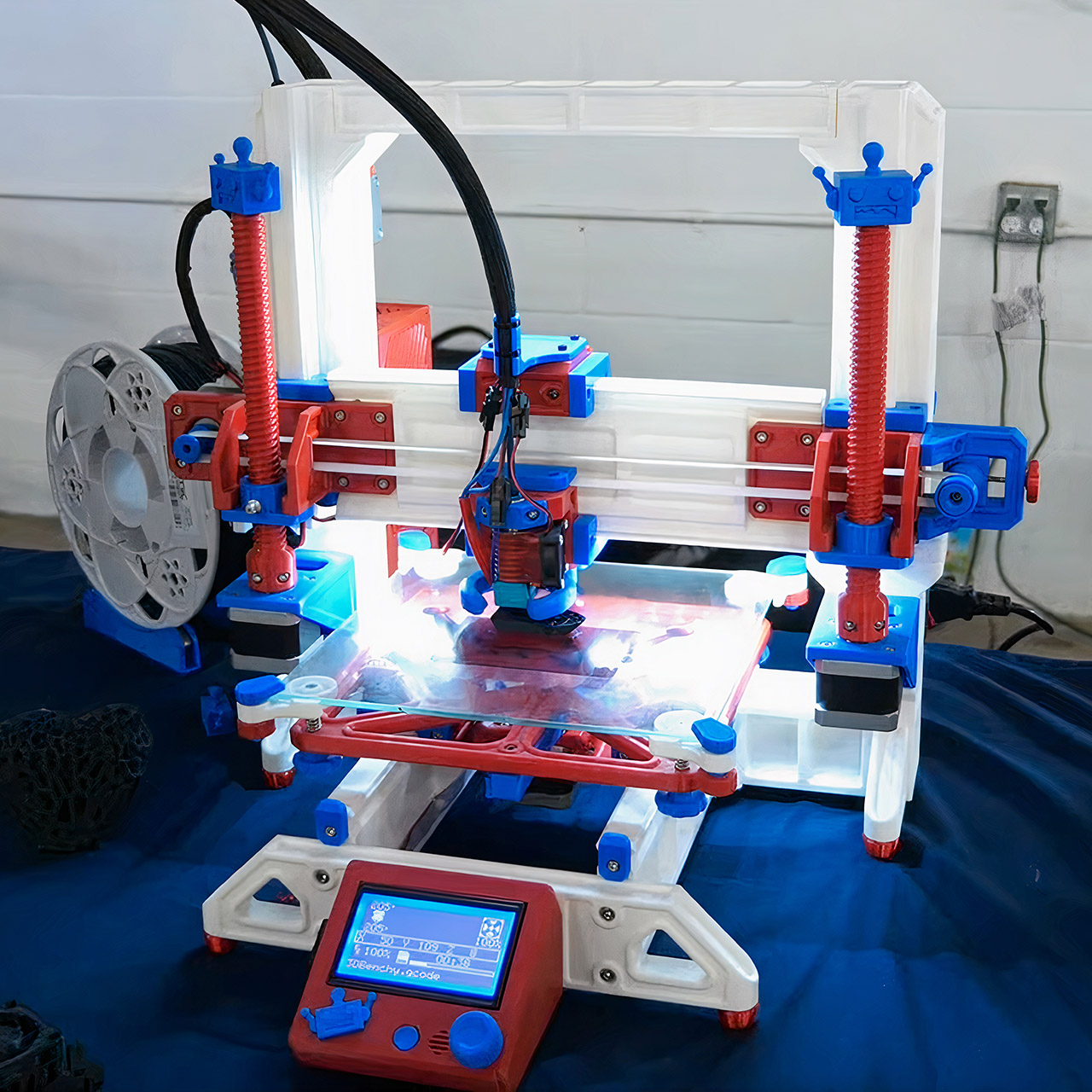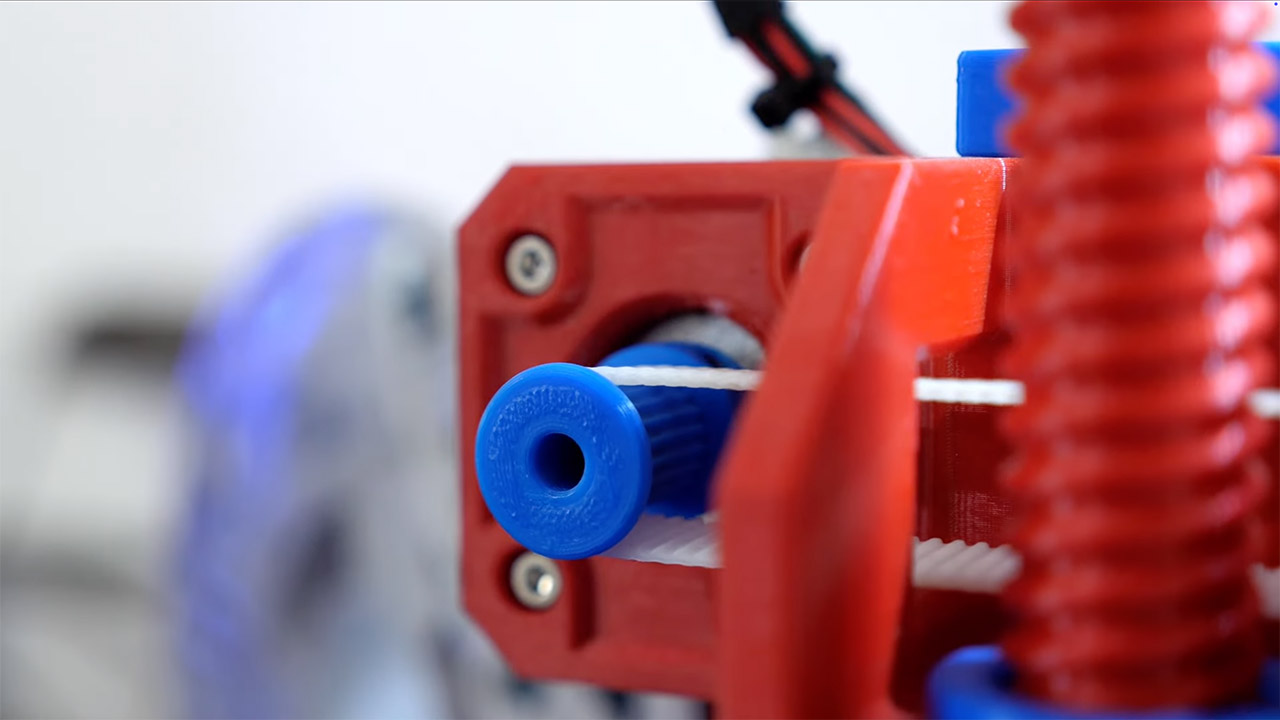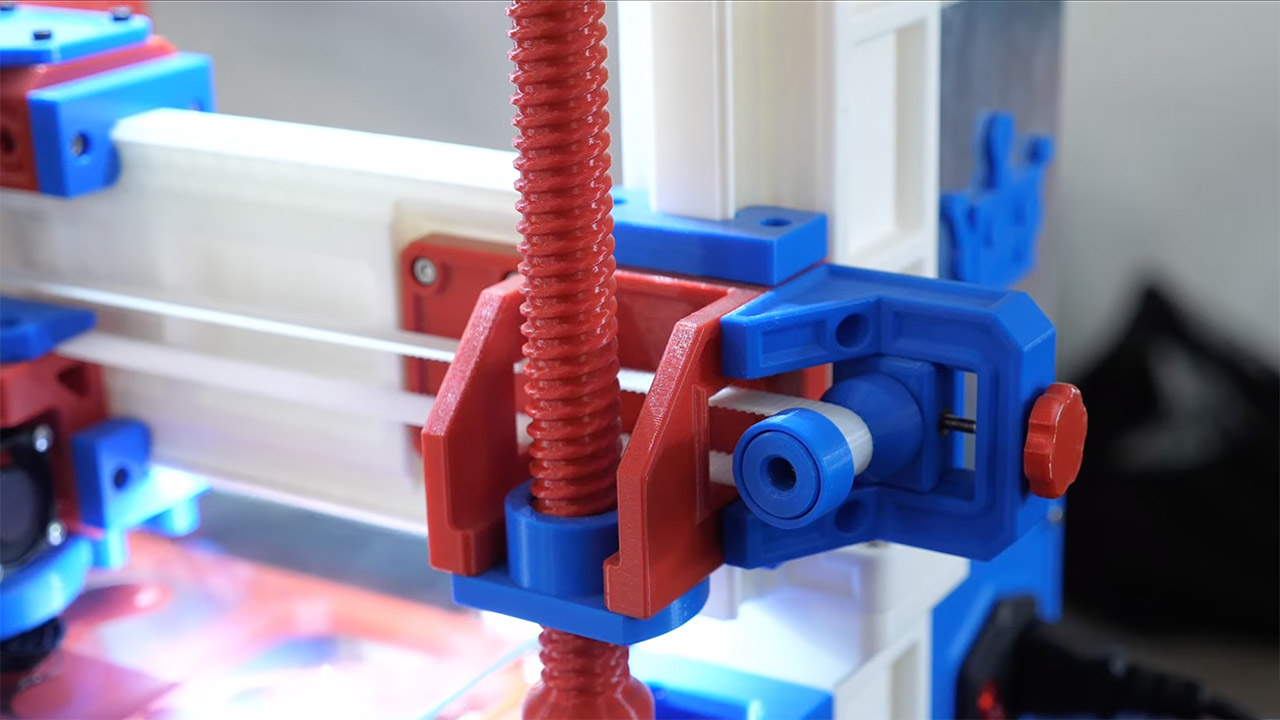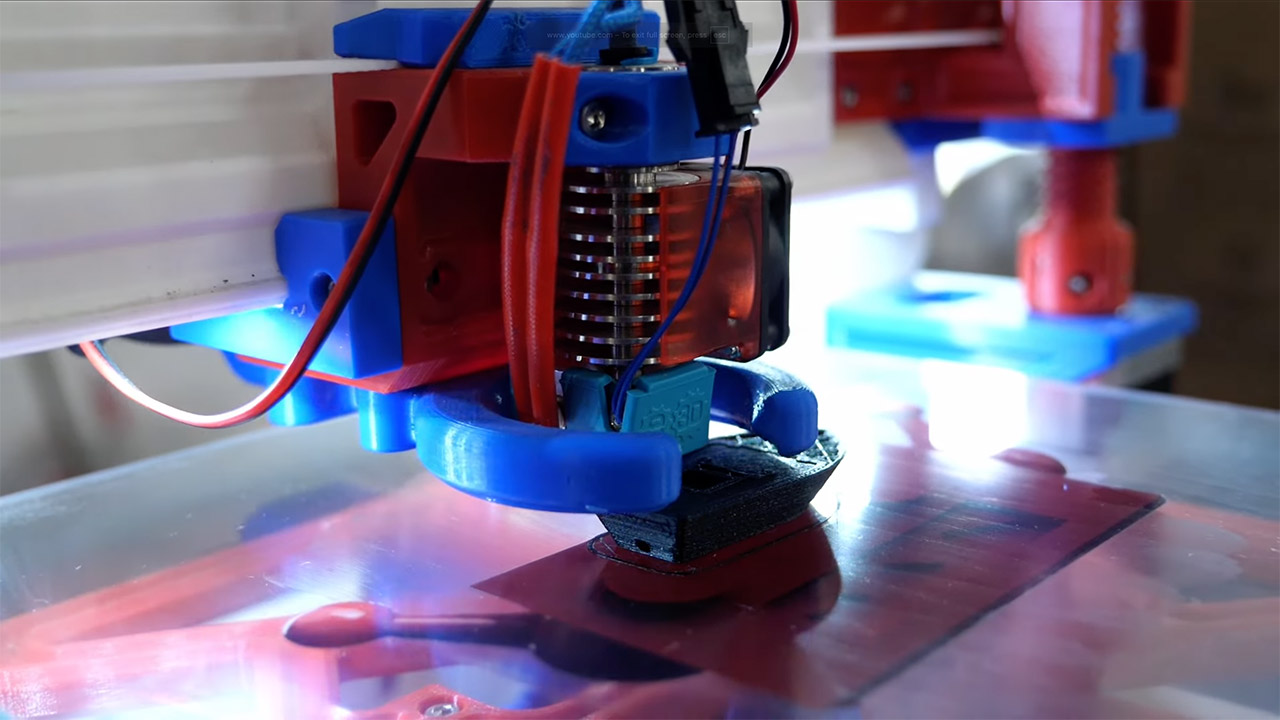
In 2019 John, the 3D Printing World mastermind, started a project in his garage workshop for the Midwest RepRap Festival (MRRF). After wowing the crowd with his 3D printed bearings the previous year the crowd’s demand was clear: make a printer. The result was the Mulbot, a 3D printed printer mostly made from 3D printed parts, showing what a hobbyist can do with a Prusa MK3 and endless creativity.
The Mulbot’s frame, bearing blocks and drive systems are all 3D printed, embodying the RepRap movement’s spirit of printers making their own parts. John didn’t print the frame for show, he integrated square rail type housings for linear bearings into the structure. These housings use 4.5mm stainless steel bearing balls that recirculate to minimize friction and precision. No standard bearing assemblies here, every part is custom, printed and purposeful. The X-axis uses a double wide TPU timing belt, also 3D printed, with printed drive and idle pulleys. The Y-axis has a herringbone gear rack and pinion, the Z-axis uses oversized printed trapezoidal nuts and screws, it’s a mechanical symphony driven by PLA and TPU.
Sale

Bambu Lab A1 Mini 3D Printer, Support Multi-Color 3D Printing, Set Up in 20 Mins, High Speed & Precision,…
- High-Speed Precision: Experience unparalleled speed and precision with the Bambu Lab A1 Mini 3D Printer. With an impressive acceleration of 10,000…
- Multi-Color Printing with AMS lite: Unlock your creativity with vibrant and multi-colored 3D prints. The Bambu Lab A1 Mini 3D printers make…
- Full-Auto Calibration: Say goodbye to manual calibration hassles. The A1 Mini 3D printer takes care of all the calibration processes automatically,…

Building a Mulbot is not for beginners. It requires a printer with a build volume of at least 250mm x 210mm x 210mm, like the Original Prusa MK3, to fit the largest frame parts. PLA is used for most parts because of its stability and low shrinkage, the timing belt and mounting feet require TPU’s flexibility. The filament cost is under 2kg, so it’s affordable but there are many parts to print. John recommends starting with smaller projects, like his linear bearing or stepper slide, to master the needed precision. A flat print surface, preferably glass, is required for accuracy, but he managed with a PEI flex plate.

It’s not meant to compete with commercial giants. With a print volume of 175mm x 200mm x 150mm (or 145mm x 200mm x 150mm with the surround shroud) it’s small but capable, prints PLA and TPU. The floating 8.5-inch square glass bed is a nice touch. Non-printed parts are minimal: a SeemeCNC EZR Extruder, an E3D V6 Lite Hotend, a Ramps 1.4 Mega Controller, Capricorn XC 1.75 Bowden tubing, LED strip lights, a 150W 12V power supply, an IEC320 inlet plug with a switch and a blower fan.

True self-replication, the RepRap ideal, is out of reach as the Mulbot’s build volume can’t fit its largest frame parts. John is upfront about this, prioritizing functionality over purism. Could it be modified to fully print itself? Maybe, but he questions the value unless a mostly printed printer is as good as a manufactured one. This pragmatic approach is refreshing, creating a functional and inspiring machine. The open-source spirit is alive, all STL files and details are on GitHub, so go ahead and modify and improve the design.